Duffus Castle was on my list for awhile due to it’s widely recognizable sunken wall, and it was fun to finally walk sideways into that iconic slanted doorway.
The castle is just outside Elgin in Moray, and the original fortification would have looked very different from what we see today. In fact, the entire landscape was different.
At one time, this site was surrounded by the waters of Loch Spynie, which drained into the Moray Firth at Lossiemouth. Over the centuries the loch lost its connection to the sea, and was further drained via a series of canals and ditches. Its modern day shores sit about 3 miles (as the crow flies) to the east. The fertile agricultural plain that remains is called the Laich of Moray.
The original castle may have sat on an island in the loch, or perhaps there was a causeway connecting it to land. Either way, choosing this site for a castle would have made a lot of sense in the geographical context of the time.
Around 1140 a Flemish man named Freskin (whose son created the title de Moravia - "of Moray") built a motte and bailey castle above the marshy plain. A motte and bailey was a timber fortification, made of a wooden keep on top of an artificial earthwork mound with an enclosed courtyard (bailey), below that would have housed stables, bakehouses, workshops etc.
Bob Marshall created a really cool reconstruction of the early castle, which really helps envision the motte and bailey setup. Click here for his full document on the reconstruction.
King David I sent Freskin up north to establish a royal presence after a pesky uprising by the Men of Moray in 1130. The descendants of Freskin would become the earls of Sutherland and Clan Murray - so Duffus was a significant and powerful ancient seat.
Freskin’s castle was destroyed by the Scots in 1297. Around 1305 the stone castle was built by Sir Reginald Cheyne. Apparently his loyalty to the crown during uprisings against English rule in 1297 made him a target and his lands were set on fire several times. Finally he received a grant from King Edward I for 200 oaks from the royal forests "to build his manor of Dufhous." He would most likely have used the oak for scaffolding, flooring and roofing.
I was quite impressed by the size of footprint of the ruin, as it was more expansive than I expected. According to Visit Forres, the castle at Duffus was once “the strongest fortress in Scotland.”
These fortifications were tested over the years, sacked in 1452 by the Douglas Earl of Moray, and by the Royalists in 1645.
So why the tilty wall? Well that was due to the ill advised decision to build such a large stone structure on an old earthwork. In their defense, they probably didn’t know at the time that it was a risky move. Over time the weight became too much and the north wall fell down the hillside. The lord who occupied the castle at the time was forced to move his quarters to another part of the castle, and in 1705 the castle was abandoned.
I love this series of photographs from Canmore (Historic Scotland’s website) of the raising of one of the walls. Photo 3 show just how close it was to collapse.


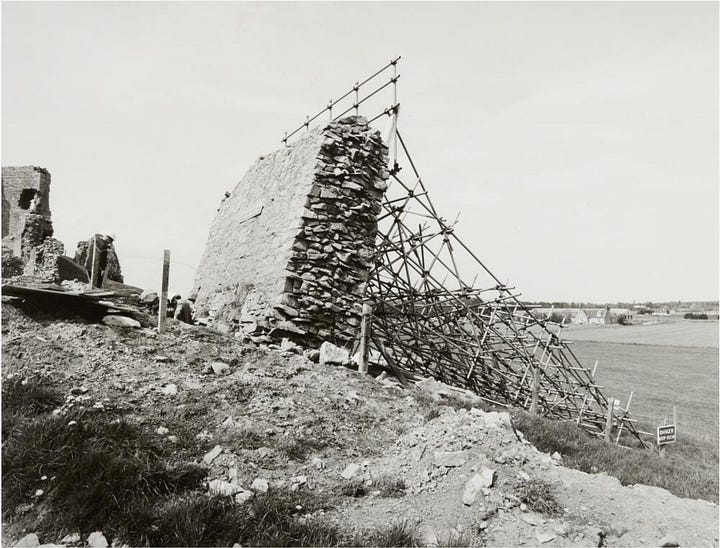

Duffus Castle is managed by Historic Environment Scotland and is free to explore year round.
Thanks for reading!
Lilly

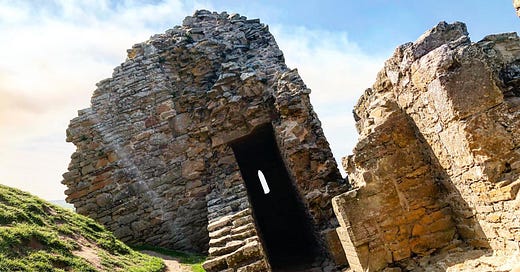





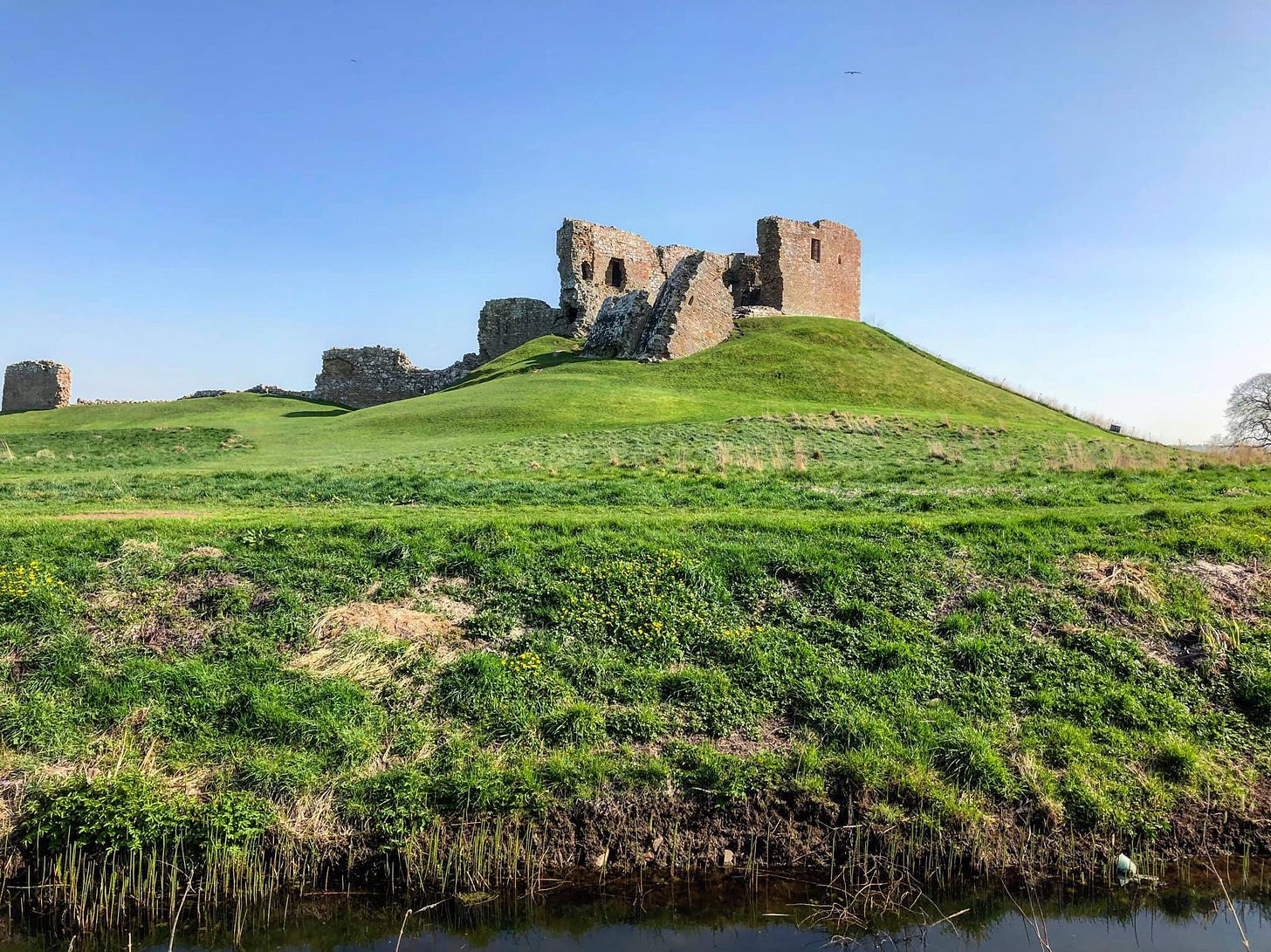

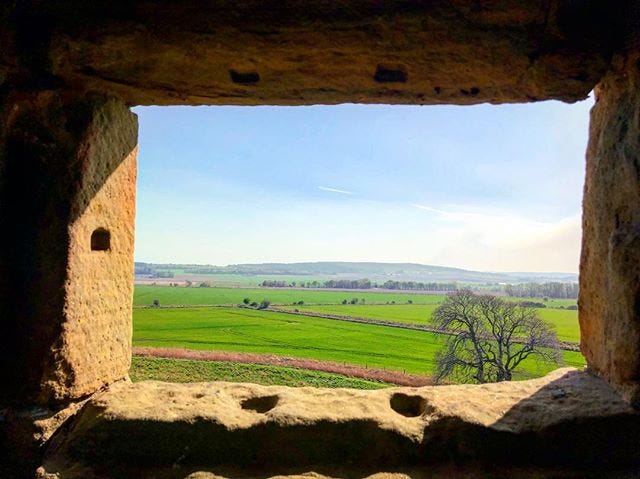

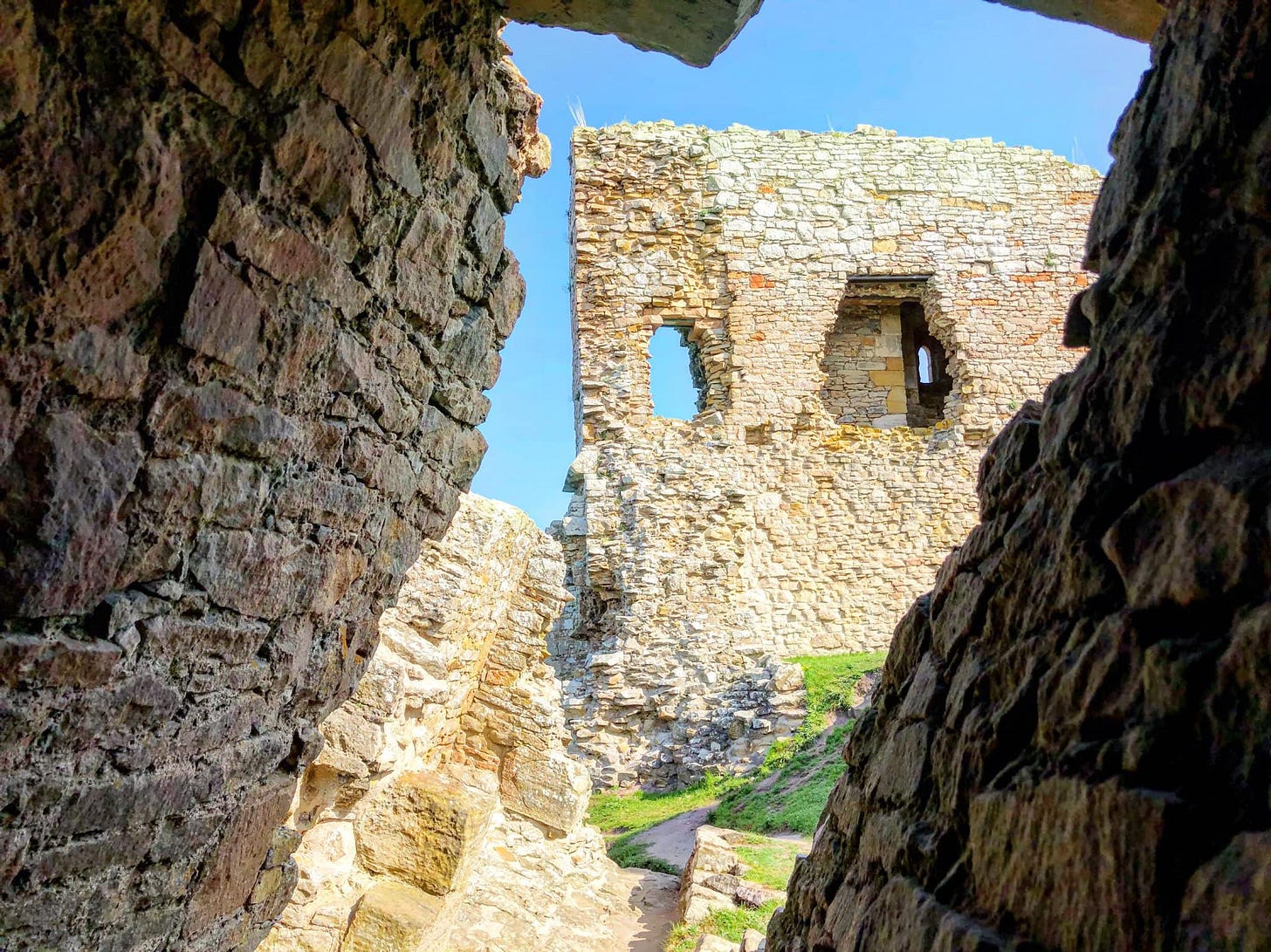
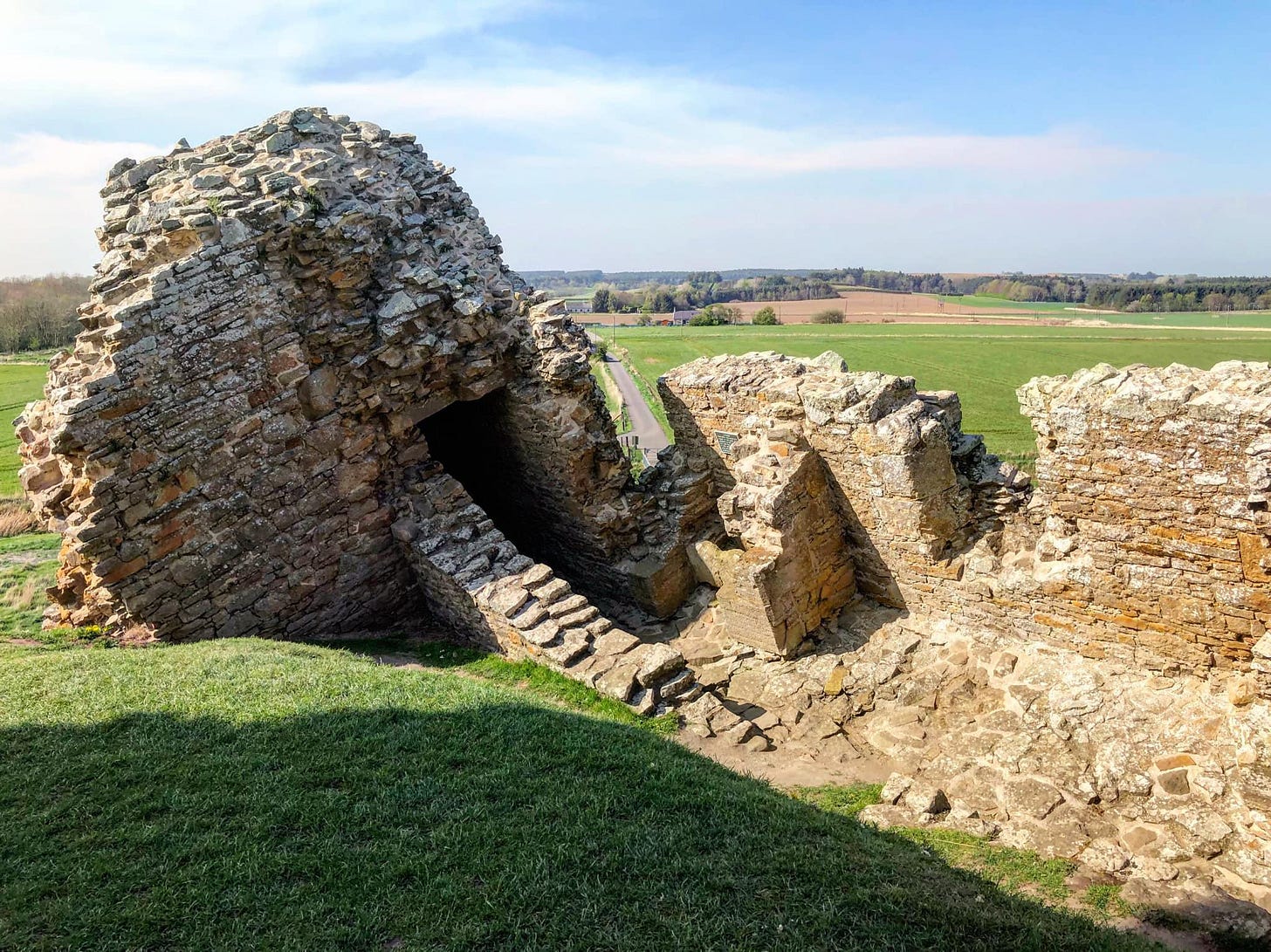
I remember getting there with you one fine day. You, striding ahead to the promontory and stronghold, I, rather breathless even then, was content to delight in the range of mosses and lichens, stonecrops, speedwell and forget me not in the castle walls, ever so slowly returning to the earth.
An enduring memory was of an Indian mum, in bright sari, shepherding her two wide-eyed children through a new, adopted heritage. 💕
Makes me woozy looking at those tilty walls!